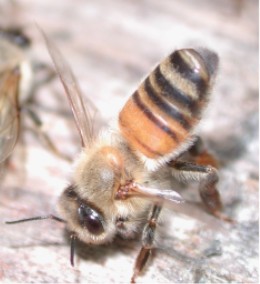
A pheromone is a secreted or excreted chemical factor that triggers a social response in members of the same species. Pheromones are chemicals capable of acting like hormones outside the body of the secreting individual, to affect the behavior of the receiving individuals. There are alarm pheromones, food trail pheromones, sex pheromones, and many others that affect behavior or physiology. Pheromones are used by many organisms, from basic unicellular prokaryotes to complex multicellular eukaryotes. Their use among insects has been particularly well documented. In addition, some vertebrates, plants and ciliates communicate by using pheromones. The ecological functions and evolution of pheromones are a major topic of research in the field of chemical ecology.

Phenethylamine (PEA) is an organic compound, natural monoamine alkaloid, and trace amine, which acts as a central nervous system stimulant in humans. In the brain, phenethylamine regulates monoamine neurotransmission by binding to trace amine-associated receptor 1 (TAAR1) and inhibiting vesicular monoamine transporter 2 (VMAT2) in monoamine neurons. To a lesser extent, it also acts as a neurotransmitter in the human central nervous system. In mammals, phenethylamine is produced from the amino acid L-phenylalanine by the enzyme aromatic L-amino acid decarboxylase via enzymatic decarboxylation. In addition to its presence in mammals, phenethylamine is found in many other organisms and foods, such as chocolate, especially after microbial fermentation.

Tryptamine is an indolamine metabolite of the essential amino acid, tryptophan. The chemical structure is defined by an indole—a fused benzene and pyrrole ring, and a 2-aminoethyl group at the second carbon (third aromatic atom, with the first one being the heterocyclic nitrogen). The structure of tryptamine is a shared feature of certain aminergic neuromodulators including melatonin, serotonin, bufotenin and psychedelic derivatives such as dimethyltryptamine (DMT), psilocybin, psilocin and others. Tryptamine has been shown to activate trace amine-associated receptors expressed in the mammalian brain, and regulates the activity of dopaminergic, serotonergic and glutamatergic systems. In the human gut, symbiotic bacteria convert dietary tryptophan to tryptamine, which activates 5-HT4 receptors and regulates gastrointestinal motility. Multiple tryptamine-derived drugs have been developed to treat migraines, while trace amine-associated receptors are being explored as a potential treatment target for neuropsychiatric disorders.

Olfactory receptors (ORs), also known as odorant receptors, are chemoreceptors expressed in the cell membranes of olfactory receptor neurons and are responsible for the detection of odorants which give rise to the sense of smell. Activated olfactory receptors trigger nerve impulses which transmit information about odor to the brain. These receptors are members of the class A rhodopsin-like family of G protein-coupled receptors (GPCRs). The olfactory receptors form a multigene family consisting of around 800 genes in humans and 1400 genes in mice.
Trimethylamine (TMA) is an organic compound with the formula N(CH3)3. It is a trimethylated derivative of ammonia. TMA is widely used in industry: it is used in the synthesis of choline, tetramethylammonium hydroxide, plant growth regulators or herbicides, strongly basic anion exchange resins, dye leveling agents, and a number of basic dyes. At higher concentrations it has an ammonia-like odor, and can cause necrosis of mucous membranes on contact. At lower concentrations, it has a "fishy" odor, the odor associated with rotting fish.

Trace amines are an endogenous group of trace amine-associated receptor 1 (TAAR1) agonists – and hence, monoaminergic neuromodulators – that are structurally and metabolically related to classical monoamine neurotransmitters. Compared to the classical monoamines, they are present in trace concentrations. They are distributed heterogeneously throughout the mammalian brain and peripheral nervous tissues and exhibit high rates of metabolism. Although they can be synthesized within parent monoamine neurotransmitter systems, there is evidence that suggests that some of them may comprise their own independent neurotransmitter systems.
Trace amine-associated receptors (TAARs), sometimes referred to as trace amine receptors, are a class of G protein-coupled receptors that were discovered in 2001. TAAR1, the first of six functional human TAARs, has gained considerable interest in academic and proprietary pharmaceutical research due to its role as the endogenous receptor for the trace amines phenylethylamine, tyramine, and tryptamine – metabolic derivatives of the amino acids phenylalanine, tyrosine and tryptophan, respectively – ephedrine, as well as the synthetic psychostimulants, amphetamine, methamphetamine and methylenedioxymethamphetamine. In 2004, it was shown that mammalian TAAR1 is also a receptor for thyronamines, decarboxylated and deiodinated relatives of thyroid hormones. TAAR2–TAAR9 function as olfactory receptors for volatile amine odorants in vertebrates.

Flavin-containing monooxygenase 3 (FMO3), also known as dimethylaniline monooxygenase [N-oxide-forming] 3 and trimethylamine monooxygenase, is a flavoprotein enzyme (EC 1.14.13.148) that in humans is encoded by the FMO3 gene. This enzyme catalyzes the following chemical reaction, among others:

Trace amine-associated receptor 2 (TAAR2), formerly known as G protein-coupled receptor 58 (GPR58), is a protein that in humans is encoded by the TAAR2 gene. TAAR2 is coexpressed with Gα proteins; however, as of February 2017, its signal transduction mechanisms have not been determined.

Putative trace amine-associated receptor 3 (TAAR3) is a human pseudogene with the gene symbol TAAR3P. In other species such as mice, TAAR3 is a functional protein-coding gene that encodes a trace amine-associated receptor protein.

Trace amine associated receptor 6, also known as TAAR6, is a protein which in humans is encoded by the TAAR6 gene.

Trace amine-associated receptor 1 (TAAR1) is a trace amine-associated receptor (TAAR) protein that in humans is encoded by the TAAR1 gene. TAAR1 is an intracellular amine-activated Gs-coupled and Gq-coupled G protein-coupled receptor (GPCR) that is primarily expressed in several peripheral organs and cells, astrocytes, and in the intracellular milieu within the presynaptic plasma membrane of monoamine neurons in the central nervous system (CNS). TAAR1 was discovered in 2001 by two independent groups of investigators, Borowski et al. and Bunzow et al. TAAR1 is one of six functional human trace amine-associated receptors, which are so named for their ability to bind endogenous amines that occur in tissues at trace concentrations. TAAR1 plays a significant role in regulating neurotransmission in dopamine, norepinephrine, and serotonin neurons in the CNS; it also affects immune system and neuroimmune system function through different mechanisms.

Trace amine-associated receptor 9 is a protein that in humans is encoded by the TAAR9 gene.

Olfactory receptor 1D2 is a protein that in humans is encoded by the OR1D2 gene.

Olfactory receptor 2J2 is a protein that in humans is encoded by the OR2J2 gene.

Olfactory receptor 2M7 is a protein that in humans is encoded by the OR2M7 gene.

3-Methoxytyramine (3-MT), also known as 3-methoxy-4-hydroxyphenethylamine, is a human trace amine that occurs as a metabolite of the neurotransmitter dopamine. It is formed by the introduction of a methyl group to dopamine by the enzyme catechol-O-methyl transferase (COMT). 3-MT can be further metabolized by the enzyme monoamine oxidase (MAO) to form homovanillic acid (HVA), which is then typically excreted in the urine.

The sense of smell, or olfaction, is the special sense through which smells are perceived. The sense of smell has many functions, including detecting desirable foods, hazards, and pheromones, and plays a role in taste.

RO-5166017 is a drug developed by Hoffmann-La Roche which acts as a potent and selective agonist for the trace amine-associated receptor 1, with no significant activity at other targets. This is important for the study of the TAAR1 receptor, as while numerous other compounds are known which act as TAAR1 agonists, such as methamphetamine, MDMA and 3-iodothyronamine, all previously known TAAR1 agonists are either weak and rapidly metabolized, or have strong pharmacological activity at other targets, making it very difficult to assess which effects are due to TAAR1 activation. The discovery of RO-5166017 allows purely TAAR1 mediated effects to be studied, and in animal studies it was shown to prevent stress-induced hyperthermia and block dopamine-dependent hyperlocomotion, as well as blocking the hyperactivity which would normally be induced by an NMDA antagonist. The experiment was done in dopamine transporter knockout mice, and since TAAR1 affects the dopamine transporter, the results could be very different in humans.

In zoology, copulation is animal sexual behavior in which a male introduces sperm into the female's body, especially directly into her reproductive tract. This is an aspect of mating. Many animals that live in water use external fertilization, whereas internal fertilization may have developed from a need to maintain gametes in a liquid medium in the Late Ordovician epoch. Internal fertilization with many vertebrates occurs via cloacal copulation, known as cloacal kiss, while mammals copulate vaginally, and many basal vertebrates reproduce sexually with external fertilization.
















